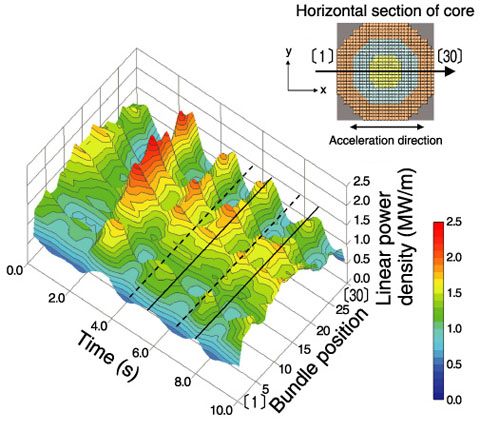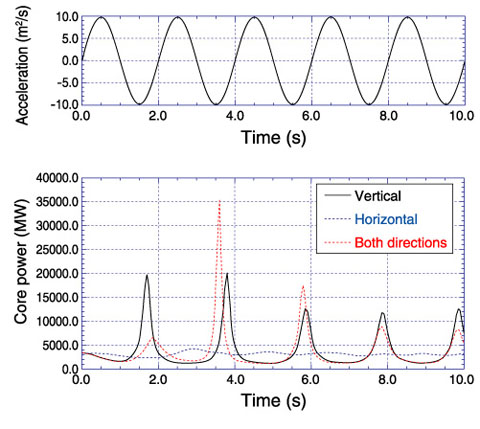
Fig.5-12 Linear power density variation of fuel bundles

Fig.5-13 Effect of accelerating direction on core power
When a nuclear reactor is subjected to a huge earthquake, the seismic vibration propagates through the core internals and may shake the coolant. Normally, the reactor is shut down safely by the insertion of control rods into the core (scram) when seismic acceleration over a set point is detected. However, in the case of scram failure, power instability in the core of a boiling water reactor (BWR) may occur because of the seismic vibration. The oscillation of the coolant flow affects the distribution of the volumetric rate of steam (void fraction) in the core. The rate of nuclear reaction then fluctuates because of the variation in the void fraction (void-reactivity feedback).
To evaluate the effect of seismic vibration on core stability, we performed detailed numerical analyses of an actual BWR stability using the TRAC/SKETCH code developed by the JAEA. This code can calculate both the nuclear reaction and boiling coolant flow in the core simultaneously. The code was remodeled to take the effect of seismic acceleration into account. In the previous study, the vertical sinusoidal acceleration was suggested to cause fluctuation in the power throughout the core in the same phase. The present study clarified that the horizontal sinusoidal acceleration occasionally causes core power fluctuations with the opposite phase at both ends of the cross-section, as shown in Fig.5-12. Furthermore, Fig.5-13 indicates that the vertical sinusoidal acceleration has a more significant effect on the power fluctuation than the horizontal one. It also shows that the simultaneous addition of the horizontal and vertical accelerations causes complicated fluctuations, such that a depression of the power increase is followed by a remarkably high power increase.
An actual seismic acceleration consists of the superposition of waves with various periods. Investigations of the effect of the period clarified that the core power fluctuates considerably under acceleration with a relatively long period (2∼4 s). This indicates that earthquakes occurring even comparatively far away might affect the core stability, because long-period seismic waves do not decay readily.
On the basis of the above knowledge, we are advancing this research to predict the stability of the BWR under various operating conditions.
This research was supported by a Japan Science and Technology Agency grant (CREST: Core Research for Evolutional Science and Technology).